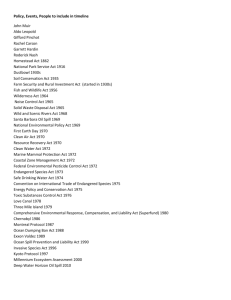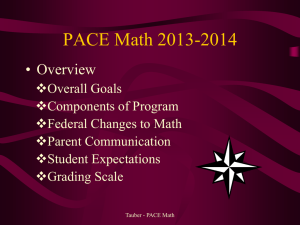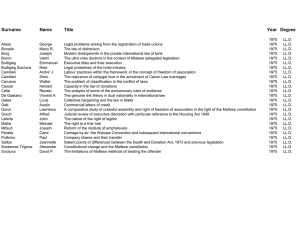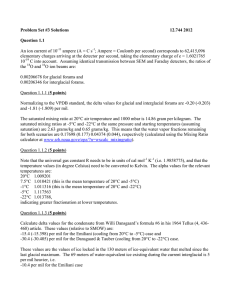problem inventory analysis (pia)
advertisement
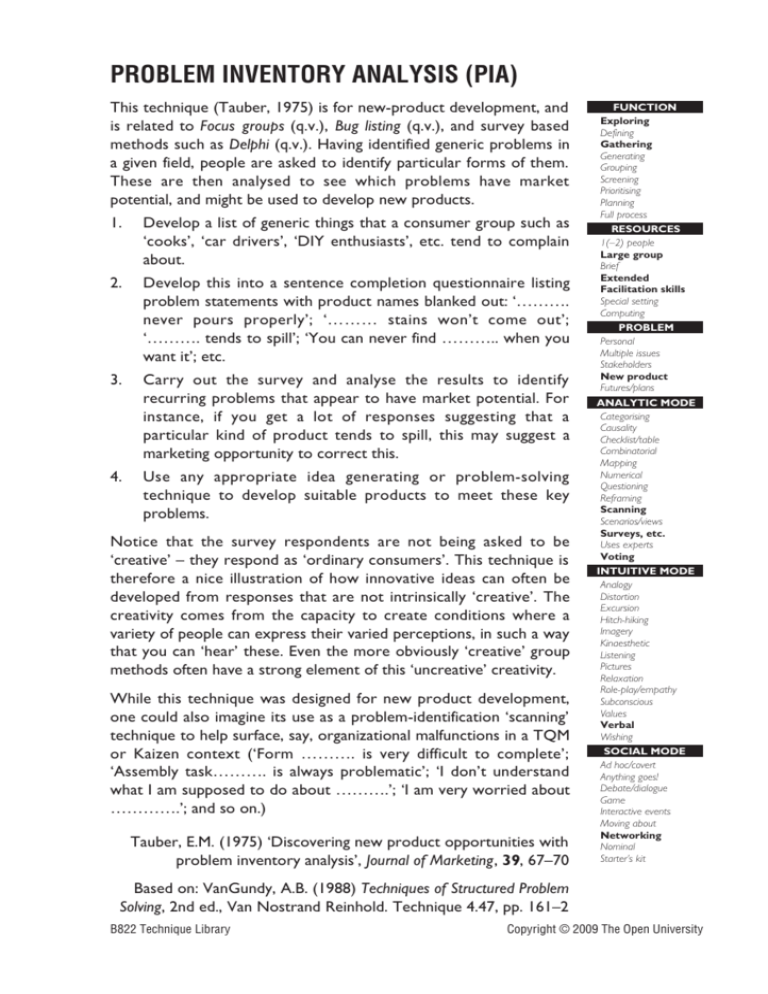
PROBLEM INVENTORY ANALYSIS (PIA) This technique (Tauber, 1975) is for new-product development, and is related to Focus groups (q.v.), Bug listing (q.v.), and survey based methods such as Delphi (q.v.). Having identified generic problems in a given field, people are asked to identify particular forms of them. These are then analysed to see which problems have market potential, and might be used to develop new products. 1. Develop a list of generic things that a consumer group such as ‘cooks’, ‘car drivers’, ‘DIY enthusiasts’, etc. tend to complain about. 2. Develop this into a sentence completion questionnaire listing problem statements with product names blanked out: ‘………. never pours properly’; ‘……… stains won’t come out’; ‘………. tends to spill’; ‘You can never find ……….. when you want it’; etc. 3. Carry out the survey and analyse the results to identify recurring problems that appear to have market potential. For instance, if you get a lot of responses suggesting that a particular kind of product tends to spill, this may suggest a marketing opportunity to correct this. 4. Use any appropriate idea generating or problem-solving technique to develop suitable products to meet these key problems. Notice that the survey respondents are not being asked to be ‘creative’ – they respond as ‘ordinary consumers’. This technique is therefore a nice illustration of how innovative ideas can often be developed from responses that are not intrinsically ‘creative’. The creativity comes from the capacity to create conditions where a variety of people can express their varied perceptions, in such a way that you can ‘hear’ these. Even the more obviously ‘creative’ group methods often have a strong element of this ‘uncreative’ creativity. While this technique was designed for new product development, one could also imagine its use as a problem-identification ‘scanning’ technique to help surface, say, organizational malfunctions in a TQM or Kaizen context (‘Form ………. is very difficult to complete’; ‘Assembly task………. is always problematic’; ‘I don’t understand what I am supposed to do about ……….’; ‘I am very worried about ………….’; and so on.) Tauber, E.M. (1975) ‘Discovering new product opportunities with problem inventory analysis’, Journal of Marketing, 39, 67–70 FUNCTION Exploring Defining Gathering Generating Grouping Screening Prioritising Planning Full process RESOURCES 1(–2) people Large group Brief Extended Facilitation skills Special setting Computing PROBLEM Personal Multiple issues Stakeholders New product Futures/plans ANALYTIC MODE Categorising Causality Checklist/table Combinatorial Mapping Numerical Questioning Reframing Scanning Scenarios/views Surveys, etc. Uses experts Voting INTUITIVE MODE Analogy Distortion Excursion Hitch-hiking Imagery Kinaesthetic Listening Pictures Relaxation Role-play/empathy Subconscious Values Verbal Wishing SOCIAL MODE Ad hoc/covert Anything goes! Debate/dialogue Game Interactive events Moving about Networking Nominal Starter’s kit Based on: VanGundy, A.B. (1988) Techniques of Structured Problem Solving, 2nd ed., Van Nostrand Reinhold. Technique 4.47, pp. 161–2 B822 Technique Library Copyright © 2009 The Open University





